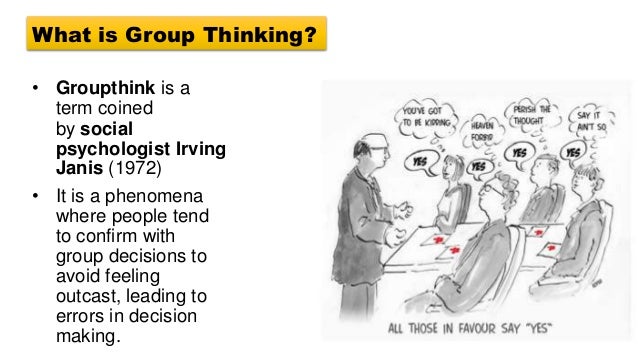group think is a real thing experiments show that nearly 75 of people would follow a group even if they think the group is wrong

“Group Think” and the Power of Conformity

When faced with a decision, individuals often seek the opinion and guidance of others. This tendency to conform to the thoughts and actions of a group is known as “Group Think,” and it is a powerful force that shapes our behavior and decisions in social settings.
Recent experiments have shed light on just how prevalent and influential group think can be. Astonishingly, nearly 75% of people would willingly follow a group even if they believe the group is wrong. In other words, the majority of individuals prioritize conformity over their own beliefs or critical thinking.
One famous study that exemplifies the power of group think is the Asch Conformity Experiment, conducted by psychologist Solomon Asch in the 1950s. The experiment involved a group of subjects who were shown a series of lines of different lengths. They were then asked to identify which line matched the length of a target line. However, unbeknownst to the participants, the majority of the group were confederates instructed to give incorrect answers.
The results of the Asch Conformity Experiment were shocking. Around 75% of the participants conformed to the group’s wrong answers at least once, despite knowing that they were providing inaccurate responses. This highlights how influential the opinions and actions of a group can be, even when individuals have a clear understanding of what is right or wrong.

One explanation for this tendency to conform is the desire to avoid social rejection or ridicule. As social beings, we have an inherent need for acceptance within our communities and fear being ostracized if we go against the majority opinion. This fear of judgment often leads individuals to suppress their own thoughts and adopt the views of the group, regardless of their personal beliefs.
Furthermore, the phenomenon of group think can be worsened by the presence of a dominant or persuasive leader within the group. Research has shown that when a leader expresses a clear opinion or sets a specific direction, individuals are more likely to conform to that viewpoint, even if they have reservations about its accuracy.
Understanding the power of group think is vital, as it can have both positive and negative consequences. On one hand, group think can foster a sense of unity and cooperation within a community. It can facilitate teamwork and help groups reach consensus, leading to efficient decision-making. However, on the other hand, group think can stifle creativity, hinder critical thinking, and even lead to disastrous outcomes when the majority opinion is flawed or misguided.
To overcome the negative effects of group think, it is essential to promote individuality, independent thinking, and open-mindedness. Encouraging diverse perspectives, stimulating healthy debate, and cultivating an environment where dissent is welcomed can counteract the potential pitfalls of conformist behavior.
In conclusion, the experiments demonstrating the prevalence of group think are a stark reminder of how easily individuals can be swayed by the opinions and actions of a group, even when they know the group is wrong. This tendency highlights the power of conformity and the desire for social acceptance. By being aware of this phenomenon and encouraging independent thinking, we can mitigate the negative consequences of group think and foster a society that embraces diversity of thought.
Share
Related Posts
Quick Links
Legal Stuff

